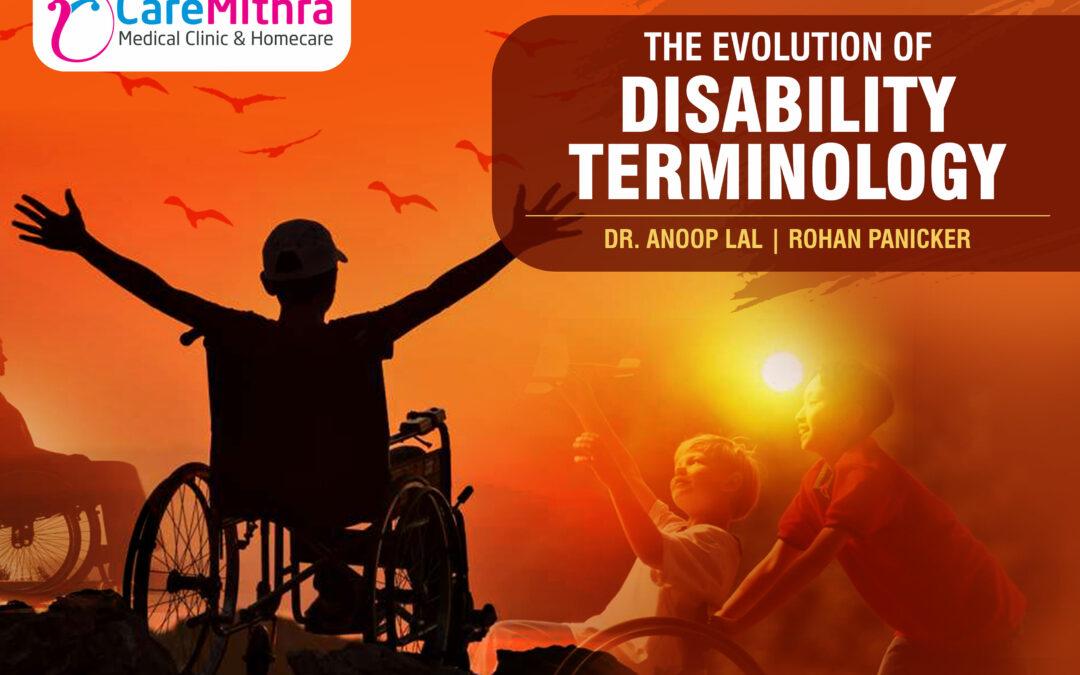Over the years, the language used to describe disability has undergone significant transformation, reflecting positive shifts in societal attitudes, improvement in understanding, and the ongoing pursuit of inclusivity and respect for individuals with disabilities. This evolution of terminology is not merely a matter of semantics; it reflects broader changes in how we perceive, interact with, and advocate for people with disabilities. This article will explain how disability terminology has evolved from the medical model to the social model, the types of language that can be used to denote those with disabilities depending on preference and context, and the move towards using more respectful and inclusive terminology.
- From Medical Model to Social Model:
Historically, the predominant framework for understanding disability was the medical model, which viewed disability as a deficiency or impairment within the individual. Archaic terms like “crippled,” “handicapped,” and “invalid” were commonly used, often carrying negative connotations, and implying a sense of inferiority, inadequacy, or brokenness. In this old-fashioned paradigm, disability was seen as rather a personal tragedy or medical condition to be cured or fixed. It also implied that those with disabilities could be “abnormal” and are therefore incapable of making their own decisions and conducting their own lives by themselves.
However, the emergence of the social model of disability in the latter half of the 20th century brought about a fundamental shift in perspective. This model emphasized that disability is not solely an individual medical problem but is also shaped by societal, environmental, and attitudinal barriers. Terms such as “differently abled,” “person with a disability,” and “challenged” began to gain traction, highlighting the diversity of experiences and capabilities among people with disabilities while affirming their humanity and sense of belonging.
- Embracing Identity (Disability)-First Language:
One of the most significant developments in disability terminology has been the rise of identity-first language. This approach mentions the disability before the person, recognizing disability as an inherent aspect of identity rather than something separate or secondary. Phrases like “disabled person” or “autistic individual” are preferred by many in the disability community, as they acknowledge the significance of disability in shaping one’s experiences, perspectives, and sense of self.
Identity-first language challenges the notion that disability should be euphemized or minimized by stigma and empowers disabled individuals to embrace their identities with pride and dignity. It acknowledges that disability is not something to be ashamed of or concealed but rather an integral part of who a person is.
- Toward Inclusive and Respectful Terminology (Person-First Language):
As awareness and understanding of disability issues have grown, so too has the recognition of the importance of using inclusive and respectful language. Terms that were once considered acceptable may now be seen as outdated, offensive, discriminatory, vulgar, and derogatory, reflecting changing norms and sensitivities.
For example, phrases like “wheelchair-bound” are now widely discouraged, as they reinforce negative stereotypes and imply a lack of self-sufficiency or autonomy. Instead, person-first language, where the individual is mentioned before their disability(s), is used to emphasize the individual’s humanity and capabilities, while avoiding reductionist or stigmatizing labels. So, instead of “wheelchair-bound”, we would now say something like “person who uses a wheelchair”. “Dyslexic student” becomes “student with dyslexia”, “deaf employee” becomes “employee with a hearing impairment”, “mentally ill teenager” becomes “teenager with a mental health condition”, “blind woman” becomes “woman who is visually impaired”, etc. While this may seem contradictory to the aforementioned identity-first language, the key is to always be mindful of the context and respect the individual’s preferences for how they would like to be identified and labelled.
- The Importance of Listening to Disabled Voices
Central to the evolution of disability terminology is the importance of including disabled people in discussions about their own experiences and needs. As such, the preferences for terminology may vary among individuals and communities, and it is essential to listen to and respect the voices of disabled people themselves.
Rather than imposing language from an outsider perspective, it is crucial to engage in dialogue and consultation with disabled individuals and advocacy organizations to understand their preferences and perspectives. This collaborative approach ensures that disability terminology is not only accurate and respectful but also reflects the lived experiences and identities of those it seeks to describe.
It is also worth noting the diversity and complexity of disability experiences by recognizing the intersectionality of disability with other aspects of identity, such as socio-economic status. For instance, if a person with a particular disability has also been born into poverty or becomes impoverished, they may experience various other kinds or additional sets of challenges and difficulties to living than that of a person with the same disability who is financially stable. It is important to acknowledge that the personal circumstances, situations, hardships, and adversities faced by two individuals can differ regardless of having the same disability alone due to other facets of life.
In conclusion, the evolution of disability terminology reflects broader shifts in societal attitudes, understanding, and advocacy for inclusion and respect. From the medical model to the social model, from identity-first language to person-first language, the language we use to describe disability shapes our perceptions, interactions, and policies. The key is to always be mindful of the context and respect the individual’s preferences for how they would like to be identified and labelled. By listening to disabled voices and embracing inclusive and respectful terminology, we can continue to move towards a more equitable and inclusive society for all.
Article Credits
Dr. Anoop Lal, Medical Director, CareMithra
Rohan Panicker, Creative Writer, CareMithra





